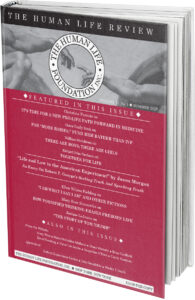Why Think Witches?
Telekinesis is described as the ability to move inanimate objects at will. Proving it in a laboratory setting is problematic. People who claim they have the ability usually can’t say how they do it and have difficulty managing it, which means it can’t be reliably reproduced in successive experiments, and reproducing results is the litmus test for scientific acceptance.
Hysterical strength, another phenomenon, is triggered by a desperate need to save a life: A mother, for example, lifts a car to save her child, or a woman plucks a 250-pound weighted barbell off her husband’s neck after a bench-press accident—both average females incapable of doing this under normal circumstances. Accounts of such feats include both men and women, but they are anecdotal; solid proof is elusive because the life-or-death situations that unleash it are not conducive to clinical study. Years ago, I read a story about a woman rescuing someone this way. When asked how she did it, she replied: “I forgot that I couldn’t.”
A key physical factor in pushing the body to extremes during hysterical strength events is the “adrenaline rush,” where hormones such as epinephrine surge into the blood and throughout the body. “The release of adrenaline is rapid—seemingly instantaneous—so that we can respond accordingly to fight-or-flight situations,” says Gordon Lynch, a physiologist at the University of Melbourne, Australia. E. Paul Zehr, a professor of neuroscience and kinesiology at the University of Victoria in British Columbia, Canada, says: “You can’t really design an experiment to do this in a lab and make people think they’re going to die.” So, it would have to happen in real life and be witnessed and monitored by a clinician— what are the odds of that?
Some researchers offer a pragmatic explanation of how those who lifted a car did it. Most examples of hysterical strength describe someone lifting a portion of the vehicle off the ground while three of the car’s wheels remain on the ground, distributing its total weight and thus making for not so incredible a feat. Okay. Ladies, humor me: Stop basting the turkey, wipe your hands on your apron, go into the garage, and lift one corner of the car!
In cases of hysterical strength, it’s a given that what inspired the incident is an intense need to help, whereas a telekinesis episode is presumed to be a matter of pure will. Most often this is associated with bending spoons and the like, debunked as magicians’ tricks. In popular culture telekinesis is commonly depicted as mischievous, as in Roald Dahl’s Matilda, about a little girl who uses her powers to punish a cruel headmistress, or creepy, usually to the point of evil, as in the 1976 movie Carrie in which a teenager humiliated at her school prom telekinetically locks the gym doors and kills everybody. Scenarios where telekinesis unlocks doors and saves people are rare.
Telekinesis researchers have focused on what they term “micro-PK” or the manipulation of very small objects. The idea is that if the ability exists at all, its force is obviously very weak. But why is that obvious? They don’t even know if it exists, but if it does, they know it’s weak? If it does exist, and, like hysterical strength, can be triggered by an overpowering need to save another, or oneself, why would it be limited to small, inanimate objects?
Are ostensibly objective scientists prone to cultural bias like the rest of us? Extraordinary feats of strength make someone momentarily superhuman, but still human. The event is grounded in physicality, whereas unlocking a door or moving someone out of harm’s way without touching them would seem to spring from a noncorporeal power that is mysterious, confounding, and unsettling. Simply put, we get warm and fuzzy feelings about Superman, Carrie not so much. One is the ordinary being extraordinary, the other is a witch. People who say they have telekinetic ability also say it often appears as a result of injury, illness, stress, or trauma. If this is true, its origin is ultimately in the body, not the occult, and could hint at hidden reserves of the human brain.
Well, since telekinesis can’t be studied in a laboratory setting, we’ll never have answers, and it shall dwell in the land of urban legend forever. Unless . . .
What if there were a way to observe such folk unawares, while in their natural habitat? What if, say, someone was placed under surveillance, perhaps protective due to threats, and while being watched a telekinesis event occurred, and from that time forward the surveillance took on a different form of study. The agent could give visual confirmation, provided he’s trained to analyze what he sees rather than dismiss it out of hand. He would have to be trained. The mind craves normalcy the way the lungs crave air. Could the agent monitor the event? Some researchers assert that the possibility of the existence of telekinesis could have to do with the formation of powerful physical fields such as electromagnetism. If the agent were equipped with an EMF meter, could data be collected? Such a study project would require a fortuitous confluence of events, to say the least. But if SETI—a generic term for scientific searches for extraterrestrial life that monitor electromagnetic radiation for signs of transmissions from civilizations on other planets—has a place at the table, wouldn’t a focus on this earth-bound phenomenon also be worthy?
Given how hysterical strength manifests spontaneously in order to save a life, it’s hard to fathom how it could ever be used to harm. And since at this point little is really known about telekinesis, why not consider that it might also manifest in an overpowering urge to help someone in need, springing from hidden reserves in the human brain, not a fearsome supernatural realm? As the saying goes, when you hear hoofbeats think horses, not zebras. Why think witches?











Loved this one!
Weird choice of an essay for Human Life Review.
Why?